Editor’s Note: This story was originally published on Feb. 4. It has been updated to reflect the new status of Viva Learning.
Microsoft has announced Viva, a new “employee experience platform” that integrates with Microsoft Teams. If your company uses Teams, chances are that you’ll see Viva, along with some of its more familiar features like Topics and Insights, soon.
Microsoft already uses Teams as a launchpad for apps like Word and PowerPoint, plus shared resources on OneDrive and SharePoint. Inside Viva are features that Microsoft is calling Viva Connections, Viva Insights, Viva Learning, and Viva Topics. Topics is available today; Insights is available in preview, and Insights in private preview. As of April 26, Microsoft has pushed Viva Learning live into public preview.
Microsoft designed Connections for employee interactions, and Topics to allow employees to seek out answers from their colleagues. If they can’t help, Learning is designed to provide company-designed and external online courses and videos to help out. Finally, there’s Insights—the management tool that keeps track of what’s working and what isn’t, a respin of sorts of the controversial Productivity Score tool. We’ll describe them in more detail below.
Microsoft is positioning Viva as a tool that takes the pandemic, and its changes in the workplace, head on. Pre-pandemic, Microsoft had already said that online collaboration was the next step in the evolution of individual employees working on individual documents like Word and PowerPoint. It then tweaked its messaging once the pandemic made remote work a reality. Now, Microsoft’s trying to establish Viva as a sort of online community hub—a place for new employees to learn about the company, its policies, and who their coworkers are and what they know about, much like the intranets some companies already maintain.
Microsoft sees Viva as the online manifestation of an office employees can’t physically visit right now. “We need to stop thinking of work as a place, and start thinking about how to maintain culture, connect employees, and harness human ingenuity in a hybrid world,” Jared Spataro, corporate vice president for Microsoft 365, said during a pre-recorded briefing video for reporters.
Read more stories about Microsoft Teams:
- Microsoft Teams launches for consumers
- Microsoft Teams adds its own apps
- Microsoft Teams finally adds custom backgrounds
- Breakout rooms finally arrive in Microsoft Teams
What’s inside Microsoft Viva?
Viva’s components each play a distinct role, which we’ll describe here:
Viva Connections
Microsoft sees Viva Connections as the gateway to your entire Viva digital workplace, with links to town halls, company policies, and and more. Microsoft also says that Viva Connections will leverage Yammer to provide a personalized feed of information you’ll need.
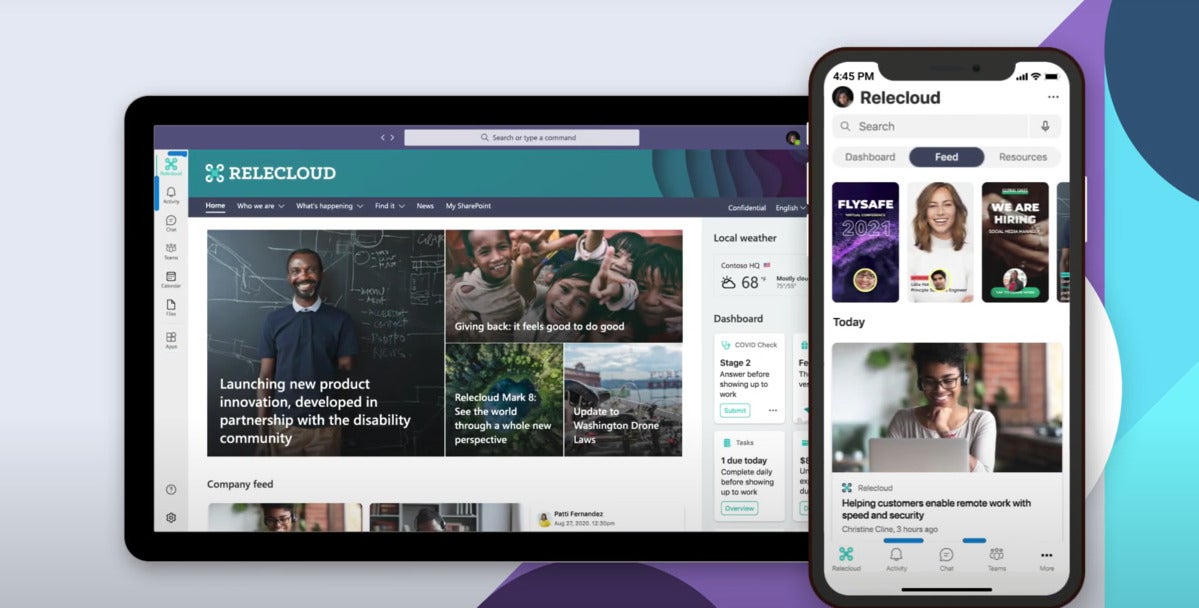 Microsoft
Microsoft
The Microsoft Viva Connections feed.
Microsoft has tried to make Teams as “sticky” as it can be, bundling more and more around it in a bid to make it a critical part of the workplace. (This fall, Teams’ active daily users climbed to 115 million, Microsoft said.) Encouraging users to start their day with Viva is part of that.
Viva Insights
Viva Insights has three different views. Employees will see a dashboard that encourages them to take time and schedule breaks, as well as meeting-free blocks for “focused learning.” Managers will also have their own dashboard, as will company execs. It’s the latter that may worry some, as it appears Microsoft is still aggregating employee work habits.
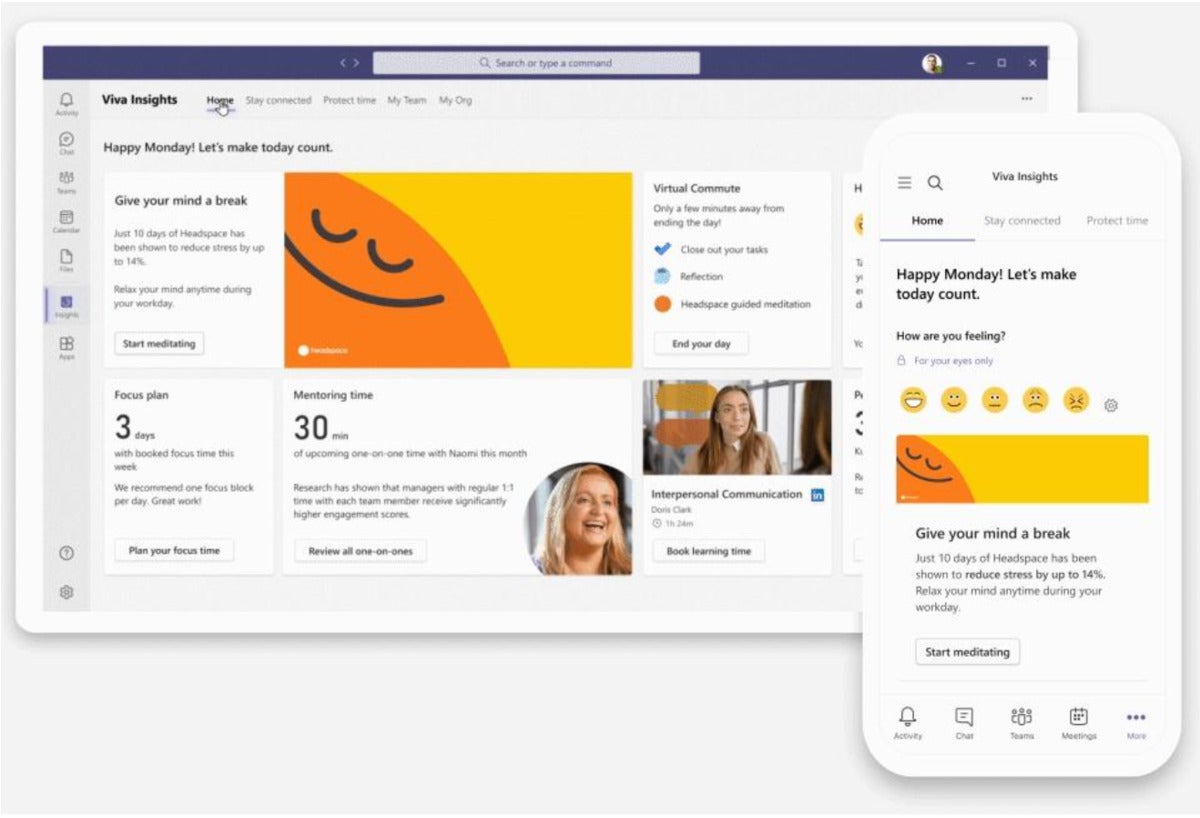 Microsoft
Microsoft
Employees will see something like this dashboard inside the Microsoft Viva Insights page.
Microsoft appears to have also taken pains to avoid the bad taste its Productivity Score left in some mouths. Though Productivity Score —and, by extension, Insights—was designed to monitor how effectively employees were using Microsoft’s tools, stressed-out employees worried that the tool could be used to track them individually. Still, example screenshots of the Microsoft Viva tool still show, in aggregate, how many workers are putting in more than an eight-hour workday—something that could be used as a reminder to manage work/life balance…or encouragement that workers needed to work more.
 Microsoft
Microsoft
An example of a top-down view of a team using Microsoft Viva and the Insights tab, with work habits being tracked specifically.
Still, Microsoft took pains to note that it doesn’t monitor specific workers. “Microsoft Viva uses aggregation, de-identification, and differential privacy,” according to Microsoft, in describing Viva Insights. “This means personal insights are visible only to the employee, while insights for managers and leaders are aggregated and de-identified by default to protect individual privacy.”
Viva Learning
Microsoft said research shows that workers will stay with a company longer if it furthers their own internal development. Viva Learning is the portal to do just that.
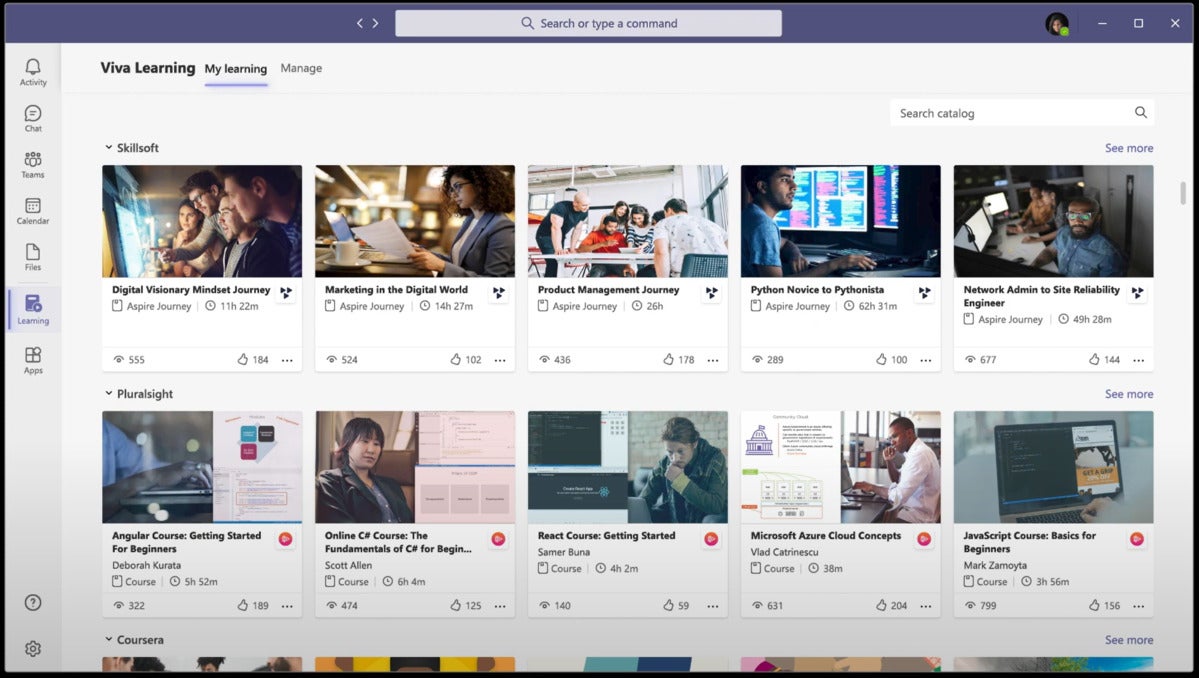 Microsoft
Microsoft
Microsoft’s Microsoft Viva, and its Viva Learning module.
Viva Learning, however, also appears to be an easy way for Microsoft or its partners to resell services like online coursework, especially with its LinkedIn subsidiary. Microsoft will make available “microcourses” and other classes from LinkedIn Learning, Microsoft Learn, trainings from leading content providers like Skillsoft, Coursera, Pluralsight, and edX, plus your own company’s online tutorials and other info.
Viva Topics
It’s probably no surprise that Topics is rolling out today—we’ve seen Microsoft try to connect employees to one another all the way back to 2015’s Delve, with similar features added to Outlook.
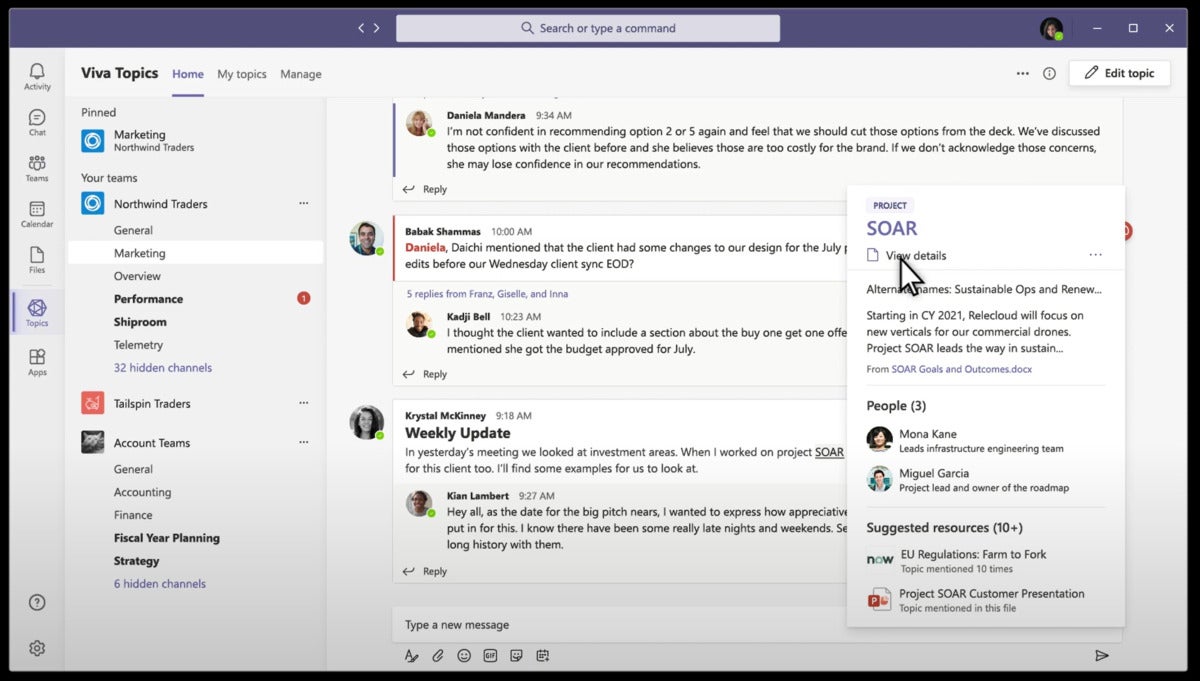 Microsoft
Microsoft
Microsoft Viva’s Topics feed will open a card…
Topics is designed to allow an organization to cut through the corporate jargon. If there’s an unfamiliar acronym or special project that might not be familiar to an employee, Topics is designed to provide a topic card that appears when an employee hovers their cursor over it, and then links to a specific topic page when they click for more information. Microsoft said that Topics is designed for companies to link to their own data, but also connect to partners.
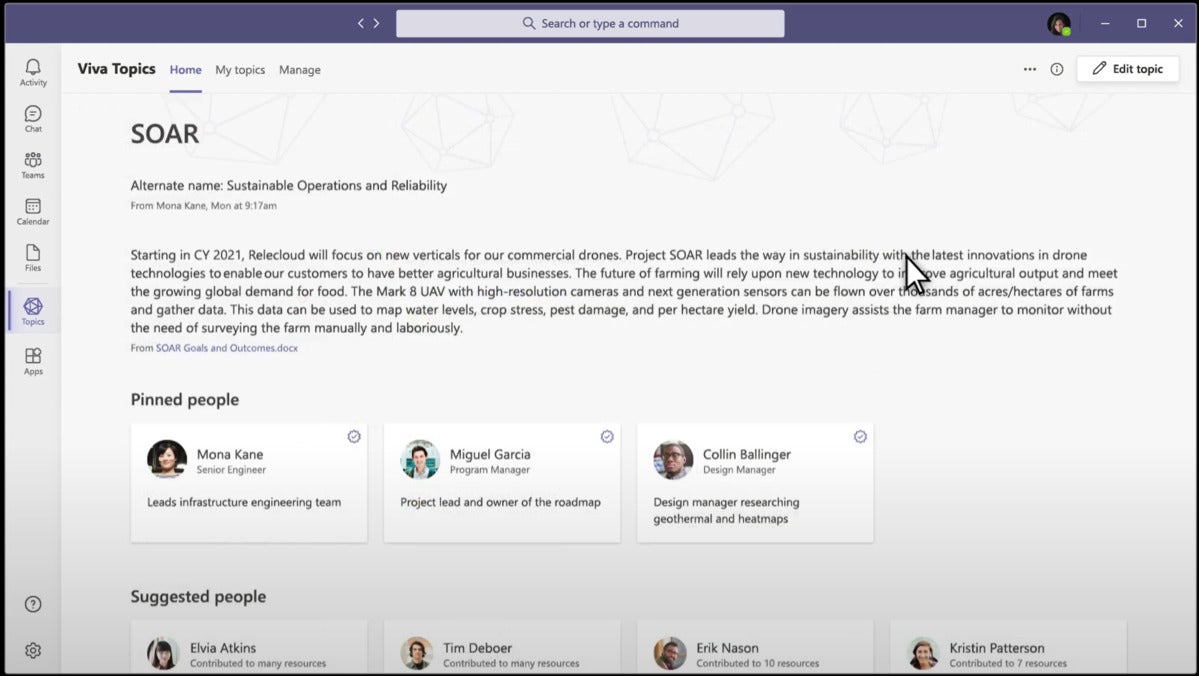 Microsoft
Microsoft
…then drill down into a Topics page.
Microsoft hasn’t stopped adding new features to Microsoft Teams, and Microsoft Viva appears poised to also receive more content in the future, too. For a multi-billion-dollar company, Microsoft has pivoted hard to online collaboration, and Microsoft business customers will be along for the ride.
